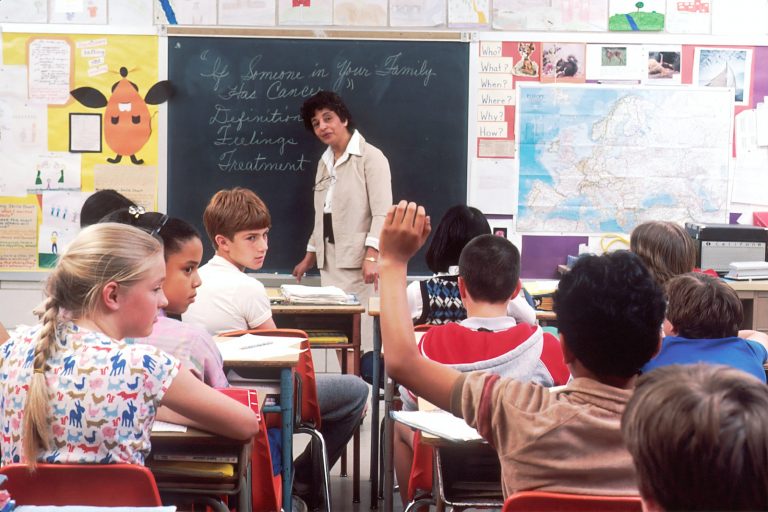Today, most schools utilize digital materials to increase interaction between students and instructors in unimaginable ways in a paper and pencil environment. Some of the ways in which teachers are using these digital materials in the classroom include interactive whiteboards, virtual learning environments, Bring Your Own Device (BYOD), e-portfolios, and flipped classroom. The increasing popularity of online tutoring and writing centers is based on the availability of these digital solutions.
Interactive Whiteboard
Known as a smartboard, an interactive whiteboard, is a large touch screen that teachers use to write content and move images using their fingers or special pens. The large screen is connected to a computer linked to a data projector to function. The computer functions as the data source, the projector as the data conveyor, and the large screen mounted on the wall as the space of data display.
A Virtual Learning Environment
The World Wide Web (www), or simply the web, is the most robust repository of information globally. Although a virtual learning environment takes the form of a face-to-face teaching and learning activity, it is a web-based electronic learning (e-learning) education system. The system provides learners with access to course content, assessments, courses, and links to external resources, such as a virtual library.
Bring Your Own Device
Given the ubiquitous nature of smart devices, schools have made provisions for learners to carry and use them in the classroom for learning purposes. Bring Your Own Device refers to this development, where learners bring technology, mostly smartphones, into the classroom and use it to browse the Internet for research purposes. Indeed, this practice is advantageous compared to paper and pencil because it lowers the cost that an institution incurs in providing materials.
E-portfolios
The availability of the Internet, computers, and interactive whiteboards has enabled teachers to utilize e-portfolios to create an electronic catalog of work to track students’ learning. Based on multimedia files, an e-portfolio presents students’ portfolio of work, including assignments and grading, written reflections, sketches, and academic field visits. This e-portfolio is better than physical papers because it seamlessly presents various materials in different formats.
Flipped Classroom
Since students have access to digital materials most of the time, it makes sense when they use them to prepare for lessons. The term ‘flipped classroom’ refers to the context where learners use online resources to discover new content before a classroom lesson begins. This pre-lesson research activity allows learners to personalize and apply whatever they have learned online.
Tutoring and Writing Centers
The increasing popularity of tutoring and writing centers is based on digital learning materials availability. Indeed, these online academic support centers, Wr1ter.com, are a form of a virtual learning environment, where professionals work for students in need of assistance. Such assistance includes learning how to generate, organize, and use ideas to strengthen arguments.
In summary, schools in today’s world of technology have embraced digital technologies to facilitate the teaching and learning process at the classroom level. The terms, such as interactive whiteboards, virtual learning environment, Bring Your Own Device, e-portfolios, and flipped classroom, refer to digital materials for teaching and learning in the classroom environment. The growing trend of tutoring and writing centers is based on the popularity of virtual learning environments in the context of a looming teacher shortage.



0 Comments